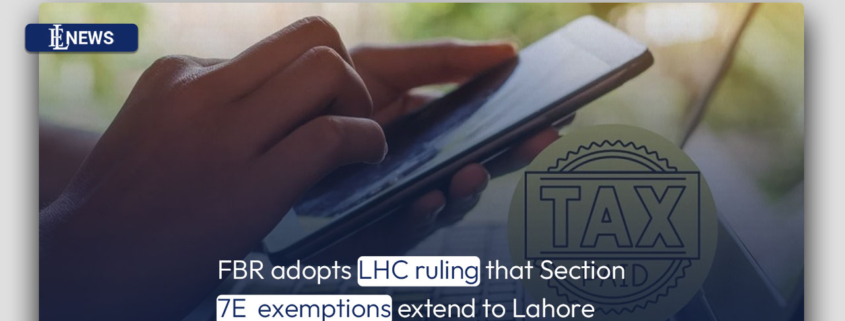FBR adopts LHC ruling that Section 7E exemptions extend to Lahore
The city of Islamabad According to August 16 news reports, the Federal Board of Revenue (FBR) has adopted the Lahore High Court’s (LHC) decision regarding Section 7E of the Income Tax Ordinance 2001. Now, Section 7E will no longer apply to cases (filers and non-filers alike) within the LHC’s jurisdiction.
The FBR eliminated the requirement for exemption certificates from the Commissioner of Inland Revenue in a recent income tax circular. As stipulated in Section 7E (tax on deemed income basis), this change pertains to various taxpayer categories, including non-resident individuals.
According to sources, real estate expert Muhammad Ahsan Malik explained that Section 7E will not apply to property transfers within Punjab, regardless of whether the transferor is a filer or non-filer. Thus, cases in Punjab will not require exemptions from the Commissioner of Inland Revenue.
Read more with EL news: DHA Quetta and Barqaab Consultancy execute an MOU
Through Circular No. 3 of 2023, the FBR loosened Section 7E’s procedural requirements. The circular clarifies its applicability in cases under the jurisdiction of the LHC, barring a reversal of the court’s decision in WP no. 52559 of 2022.
Section 7E exempts non-resident individuals, including non-resident Pakistanis, from paying tax on immovable properties. The circular facilitates the process outlined by the Inland Revenue Commissioners for exemption certificates. Until an automated system is devised, this circular simplifies property sale or transfer transactions temporarily. In certain instances, Circular No. 1 of 2023-24 will not apply, but the transferring authority will maintain seller/transferor records that are shared with the appropriate tax agencies.
The FBR received inquiries about providing evidence for the application of Section 7E. Circular No. 1 of 2023-24 has been modified and expanded to facilitate the implementation of the newly-introduced subparagraph (2A).



